Films with theme "Documentary films about health care", sorted by revenue
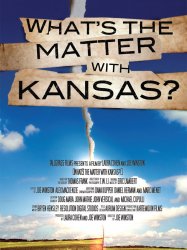 , 1h30
, 1h30Origin USA
Genres Comedy, Documentary, Romance
Themes Pregnancy films, Films about sexuality, Documentary films about historical events, Documentaire sur une personnalité, Documentary films about politics, Documentary films about health care, Political films
The documentary highlights the lives of people in Middle America, Central United States small town or suburb where most people are middle class, Protestant, and white, which twice helped elect George W. Bush. The movie shows how Kansas, once home to left-wing movements like the Populist Party, became very socially conservative in the late 20th century.

The Thought Exchange (2012)
, 1h32Origin USA
Genres Documentary
Themes Medical-themed films, Documentary films about health care, Films about psychiatry
Actors David Friedman, Lucie Arnaz
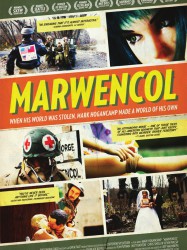
Marwencol (2010)
, 1h23Origin USA
Genres Documentary
Themes Medical-themed films, Documentary films about the visual arts, Documentaire sur une personnalité, Documentary films about health care, Films about psychiatry, Films about disabilities
On April 8, 2000, Mark Hogancamp was attacked outside of a bar by five men who beat him nearly to death. After nine days in a coma and forty days in the hospital, Mark was discharged with brain damage that left him little memory of his previous life. Unable to afford therapy, Mark creates his own by building a 1/6-scale World War II-era Belgian town in his yard and populating it with dolls representing himself, his friends, and even his attackers. He calls that town "Marwencol," a portmanteau of the names "Mark," "Wendy" and "Colleen." He rehabilitates his physical wounds by manipulating the small dolls and props — and his mental ones by having the figures act out various battles and stories.
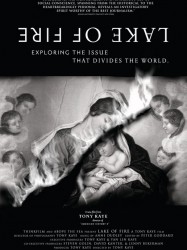
Lake of Fire (2006)
, 2h32Directed by Tony Kaye
Origin USA
Genres Documentary
Themes Pregnancy films, Films about sexuality, Documentaire sur une personnalité, Documentary films about health care
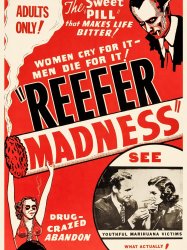
Tell Your Children (1938)
, 1h6Directed by Louis Gasnier
Origin USA
Genres Drama, Thriller, Comedy, Crime
Themes Medical-themed films, Films about drugs, Documentary films about law, Documentary films about health care
Actors Dorothy Short, Dave O'Brien, Thelma White, Carleton Young, Joseph Forte, Lester Dorr
Mae Coleman and Jack Perry are an unmarried couple living together (in the jargon of the era, they are "living in sin") and selling marijuana. Mae prefers to sell marijuana to customers her own age, whereas Jack sells the plant to young teenagers. Ralph Wiley, a psychotic ex-college student turned fellow dealer (and addict, according to the film), and Blanche help Jack sell cannabis to young students. Young students Bill Harper and Jimmy Lane are invited to Mae and Jack's apartment by Blanche and Ralph. Jimmy takes Bill to the party. There, Jack runs out of reefer. Jimmy, who has a car, drives him to pick up some more. Arriving at Jack's boss' "headquarters," he gets out and Jimmy asks him for a cigarette. Jack gives him a joint. Later, when Jack comes back down and gets into the car, Jimmy drives off dangerously, along the way running over a pedestrian with his car. A few days later, Jack tells Jimmy that the pedestrian died of his injuries. Jack agrees to keep Jimmy's name out of the case, providing he agrees to "forget he was ever in Mae's apartment". Jimmy does indeed escape the consequences of his crime—a rare occurrence in the film.

Titicut Follies (1967)
, 1h24Directed by Frederick Wiseman
Origin USA
Genres Documentary
Themes Medical-themed films, Documentaire sur une personnalité, Documentary films about health care, Films about psychiatry, Films about disabilities, Films set in psychiatric hospitals
Titicut Follies portrays the existence of occupants of Bridgewater, some of them catatonic, holed up in unlit cells, and only periodically washed. It also depicts inmates/patients required to strip naked publicly, force feeding, and indifference and bullying on the part of many of the institution's staff.

Hospital (1970)
, 1h24Directed by Frederick Wiseman
Origin USA
Genres Comedy, Documentary
Themes Documentary films about health care
Frederick Wiseman filme plus particulièrement les activités du service des urgences. À travers différentes situations, il montre comment la disponibilité des équipements, l'expertise médicale, les problèmes d'organisation et la communication entre les membres de l'équipe médicale conditionnent les soins donnés aux patients.

A Story of Healing (1997)
, 28minutesOrigin USA
Genres Documentary
Themes Documentary films about health care
A Story of Healing (une histoire de guérison) est un film documentaire de 33 minutes dans lequel on suit cinq infirmières, quatre anesthésistes et trois chirurgiens esthétiques lors d’une mission bénévole de deux semaines au delta du Mékong au Viêt Nam.
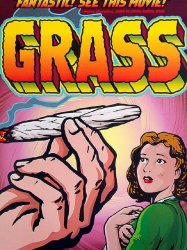
Grass (1999)
, 1h20Origin Canada
Genres Documentary
Themes Medical-themed films, Films about drugs, Documentary films about law, Documentary films about health care
Actors Woody Harrelson, Chevy Chase
Un siècle de lutte contre la marijuana aux Etats-Unis au travers d'un portrait à la fois féroce et plein d'humour.

Earthlings (2005)
, 1h35Origin USA
Genres Documentary
Themes Films about animals, Environmental films, Politique, Documentary films about animal rights, Documentaire animalier, Documentary films about law, Documentary films about environmental issues, Documentary films about health care, Political films, Documentary films about nature
Actors Joaquin Phoenix
Covering pet stores, puppy mills, and animal profession, Earthlings includes footage obtained through the use of hidden cameras to chronicle the day-to-day practices of some of the largest industries in the world, all of which rely on animals. It draws parallels between racism, sexism, and speciesism.
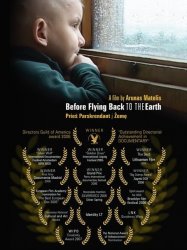
Before Flying Back to Earth (2005)
, 52minutesOrigin Lituanie
Genres Documentary
Themes Films about children, Medical-themed films, Documentaire sur une personnalité, Documentary films about health care, Films about cancer, Films about disabilities

An Open Window (2005)
, 52minutesOrigin France
Genres Documentary
Themes Medical-themed films, Documentaire sur une personnalité, Documentary films about health care, Films about psychiatry, Films about disabilities
Can madness be described? Is it possible to express the pain that it entails? In 1994, when she was about to fall prey to her illness, Khady Sylla met Aminta Ngom, who exhibited her madness freely, without fear of provocation. During her years of suffering, Aminta was her window to the world.
 , 1h31
, 1h31Origin USA
Genres Documentary, Musical
Themes Medical-themed films, Films about music and musicians, Documentary films about music and musicians, Documentaire sur une personnalité, Documentary films about health care, Musical films, Films about psychiatry, Films about disabilities
Actors Kurt Loder

O meu marido esta a negar (2007)
, 21minutesGenres Documentary
Themes Films set in Africa, Medical-themed films, Documentary films about health care, HIV/AIDS in film
Hermínia est une mère séropositive. Elle s’en est rendu compte lors de ses consultations à la maternité. Gabriel, son mari, est au courant de sa maladie et l’accepte. En revanche il refuse de faire les tests. Dans ce cas le traitement d’Hermínia ne lui servirait à rien. Elle est convaincue que si elle l’emmène voir une pièce de théâtre sur ce thème, il changera d’attitude. O meu marido está a negar décrit le spectacle interactif du Teatro do Oprimido et son rôle pour les malades du sida, en se proposant d'encourager les changements de comportement et la prise de conscience de leur public par rapport à cette maladie.

Sir! No Sir! (2005)
, 1h25Directed by David Zeiger
Origin USA
Genres War, Documentary
Themes Politique, Documentary films about war, Documentary films about historical events, Documentaire sur une personnalité, Documentary films about health care, Political films, United States Armed Forces in films
Actors Edward Asnere, Donald Sutherland, Jane Fonda, Troy Garity
Sir No Sir! tells the story of the 1960s GI movement against the war in Vietnam for the first time on film. The film explores the profound impact that the movement had on the war and investigates the way in which the GI Movement has been erased from public memory. In the 1960’s an anti-war movement emerged that altered the course of history. This movement didn’t take place on college campuses, but in barracks and on aircraft carriers. It flourished in army stockades, navy brigs and in the dingy towns that surround military bases. It penetrated elite military colleges like West Point. And it spread throughout the battlefields of Vietnam. It was a movement no one expected, least of all those in it. Hundreds went to prison and thousands into exile. And by 1971 it had, in the words of one colonel, infested the entire armed services. Yet today few people know about the GI Movement against the war in Vietnam.
 Connection
Connection